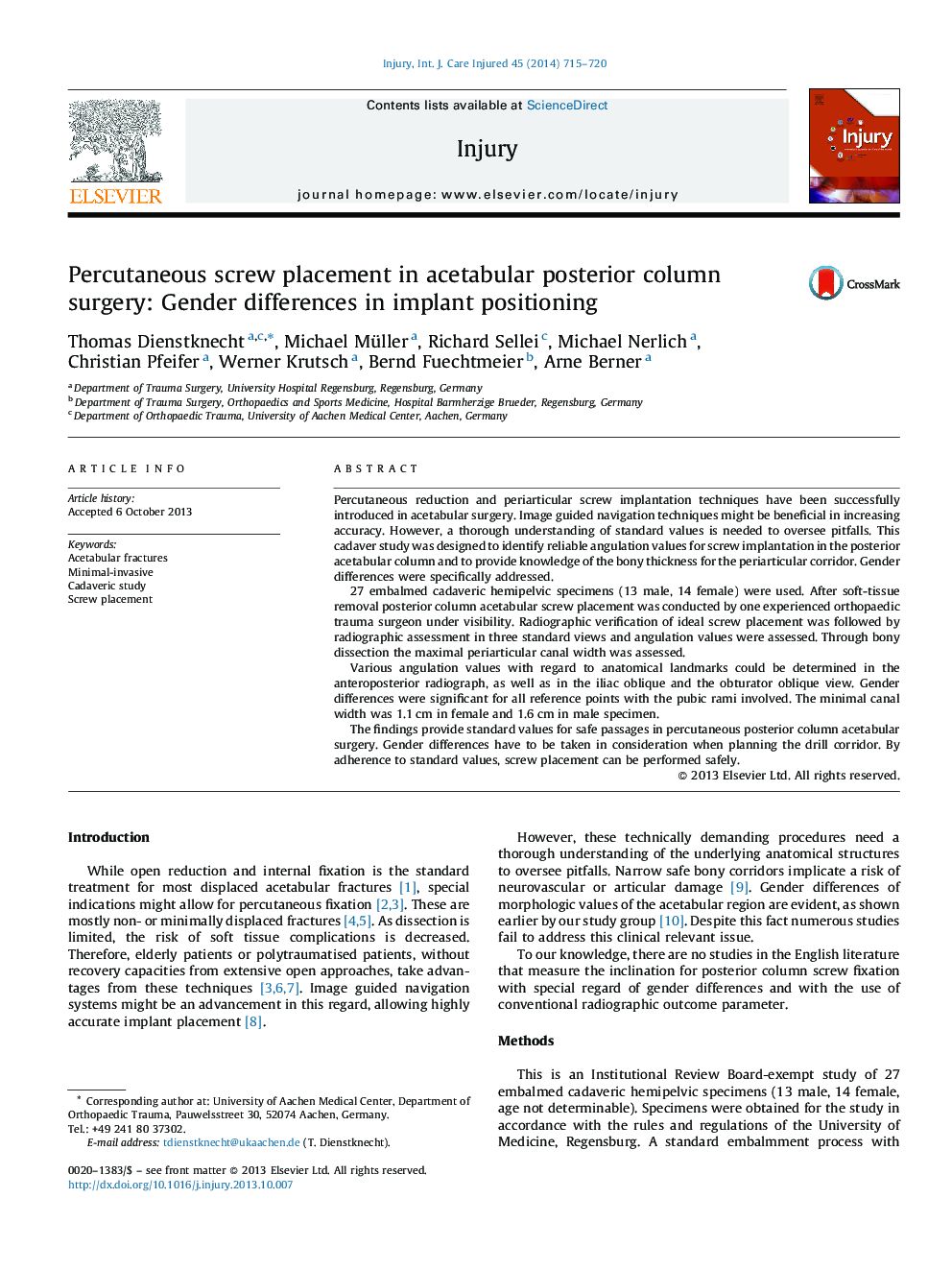| Article ID | Journal | Published Year | Pages | File Type |
|---|---|---|---|---|
| 3239478 | Injury | 2014 | 6 Pages |
Percutaneous reduction and periarticular screw implantation techniques have been successfully introduced in acetabular surgery. Image guided navigation techniques might be beneficial in increasing accuracy. However, a thorough understanding of standard values is needed to oversee pitfalls. This cadaver study was designed to identify reliable angulation values for screw implantation in the posterior acetabular column and to provide knowledge of the bony thickness for the periarticular corridor. Gender differences were specifically addressed.27 embalmed cadaveric hemipelvic specimens (13 male, 14 female) were used. After soft-tissue removal posterior column acetabular screw placement was conducted by one experienced orthopaedic trauma surgeon under visibility. Radiographic verification of ideal screw placement was followed by radiographic assessment in three standard views and angulation values were assessed. Through bony dissection the maximal periarticular canal width was assessed.Various angulation values with regard to anatomical landmarks could be determined in the anteroposterior radiograph, as well as in the iliac oblique and the obturator oblique view. Gender differences were significant for all reference points with the pubic rami involved. The minimal canal width was 1.1 cm in female and 1.6 cm in male specimen.The findings provide standard values for safe passages in percutaneous posterior column acetabular surgery. Gender differences have to be taken in consideration when planning the drill corridor. By adherence to standard values, screw placement can be performed safely.
